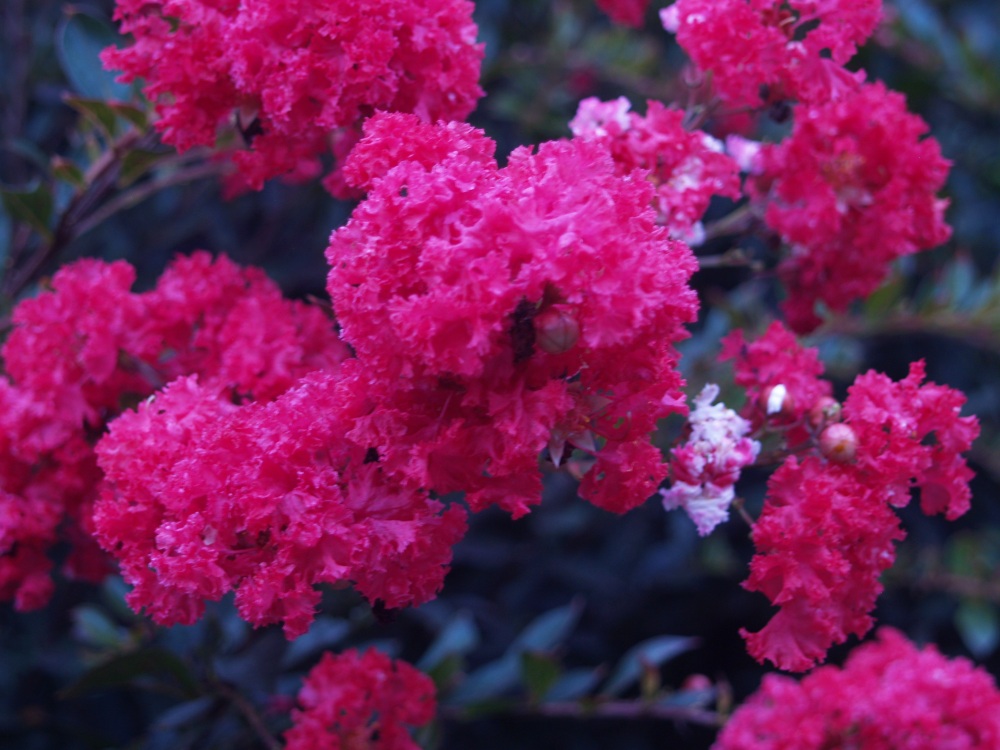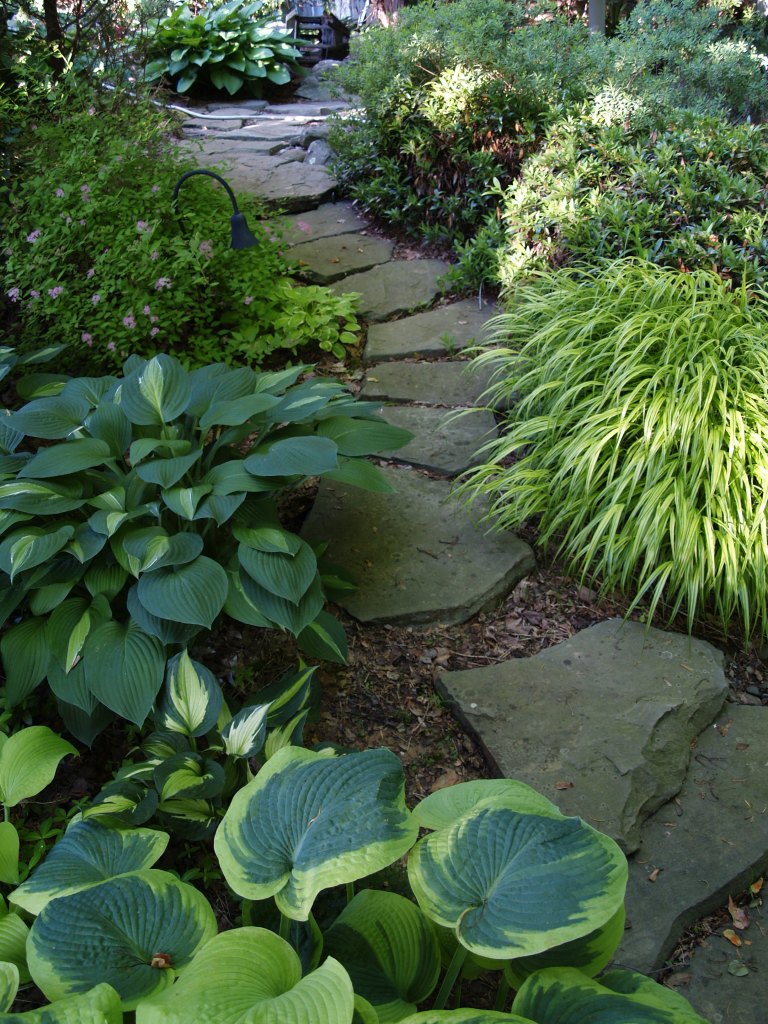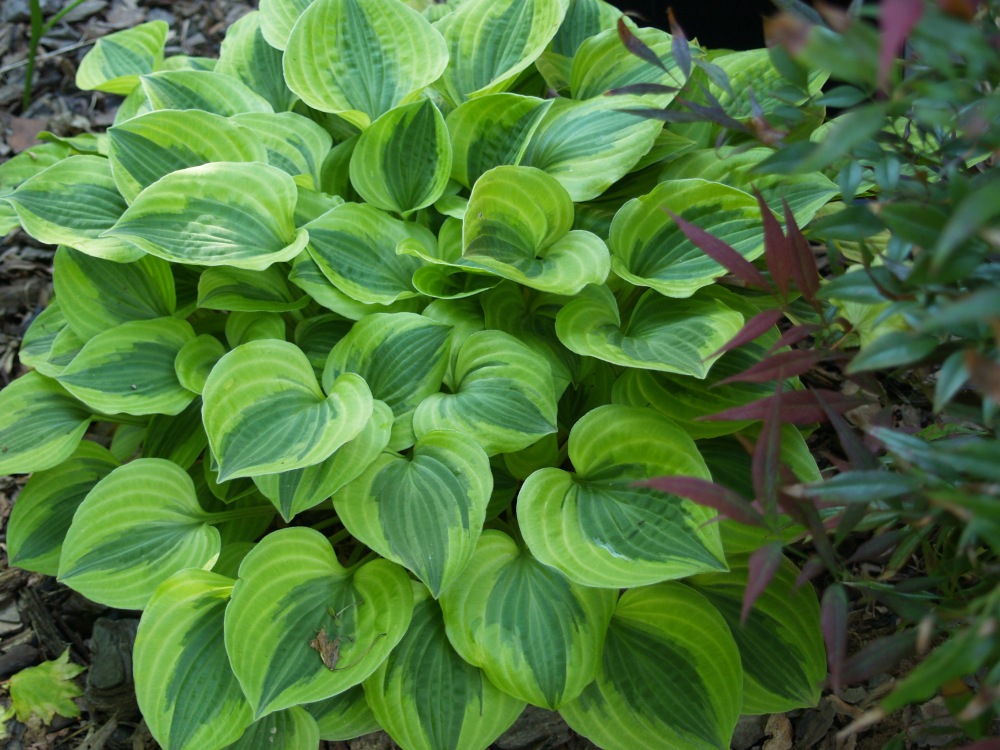Though a few blooms might momentarily persuade the gardener otherwise, the ravages of the summer sun have robbed the glow from the garden’s high season. There is no mistaking the garden in September from its peak in May, despite flowers as lovely as spring’s finest (‘Cherry Dazzle’ crapemyrtle, below). 
In this dry season the huge beech (Fagus sylvatica) in the front garden has shed leaves to obscure the stone path, and in more exposed areas the parched ground has cracked. The lawn beneath the beech has faded in recent years, and now I am convinced that the sparse grass must be removed and the area turned to a dry shade garden. The shallow roots of the beech challenge any plant’s survival, but barrenworts (Epimedium) and hostas (below) survive similarly difficult circumstances along the forest’s edge that borders the garden.
A week ago, the stone path that winds beneath the beech through the front garden was extended to meet the longer path that stretches to the rear garden (below). The path had ended into lawn, but then the shaded grass became dust (or mud), and my wife pleaded the case for additional stones so that debris is not tracked indoors every afternoon when I tour the garden. In recent years I’ve finally been trained to remove my shoes at the door, but inevitably I must retrieve something or other, and a trail is left through the kitchen. I insist that this could not possibly be from me, but then, who else?
Left over stones from the path construction several years ago were stacked (tossed) to the side, and there were just enough to complete the extension. The flat stones for the path are a silvery quartz, and I learned a difficult lesson when the first path was constructed that the edges are quite sharp. Fortunately, no blood was lost shaping the stones and setting the path’s extension, and I’m quite pleased with the result, which matches the older path except that it has no weeds growing through it. Yet.

The fellow doing some long delayed renovation to the house commends my energy for undertaking this project in the heat of summer, which was not exactly the plan, but that’s how things are accomplished around here. One moment I’m figuring on a lazy day with no plans, and the next I’m excavating for the path and hauling stones out from under a tangle of spicebush.
At least I was bright enough to hold off planting until this weekend’s cooler temperatures. After a few brief rain showers the ground beneath the beech is no longer dust, though this was not the soaking rain that is sorely needed. The thirsty roots of the beech are challenge enough, and whenever possible I hold off on planting until rain is imminent. If all goes well I will never need to drag the hose out to water as this addition to the garden is begun.

Beautiful! We undertook a similar project this month, with what looks like the same stone, but our path opens out into a small flagstone patio in the shade of a Princeton Elm. We will be planting Ajuga “Chocolate Chip” between the stones of the patio.
I have about twenty three inch pots of ‘Chocolate Chip’ left over from planting a year ago, and I’m planning to put these just off the edge of the new path. The gaps between stones are a little too tight to plant, though I’m hoping that I’ll be able to get moss growing.
Sounds lovely! I hope you’ll post photos.
I don’t think this is going to look like much until spring, and maybe not for another year. No doubt the new planting will look far better than the cloud of dust that rises when I mow over it.